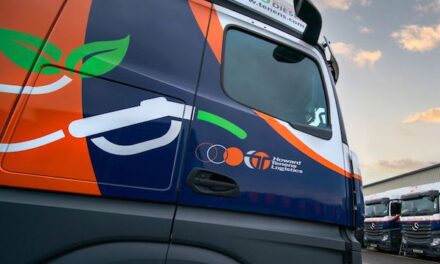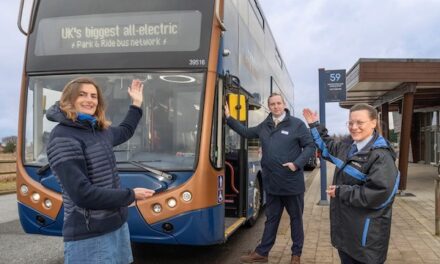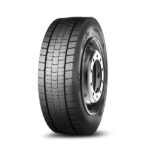Emily Newton is the Editor-in-Chief of Revolutionized, an online magazine exploring innovations in the industrial sector.
The supply chain is undergoing a major transition right now. Businesses are pivoting to new logistics strategies — like decentralized fulfilment — that prioritize flexibility, speed and convenience.
Hot shot trucking in the U.K. and Europe involves hauling smaller and more time-sensitive less-than-truckload (LTL) loads within a certain timeframe, typically to a single customer or location.
This kind of delivery can offer significant advantages for the supply chain, including lower shipping costs and greater convenience.
How Does Hot Shot Trucking Work?
Trucking and logistics companies offer hotshot delivery services worldwide. These are generally the fastest or most expedited methods the business provides and is the fastest possible road delivery for an item or shipment.
Hot shot deliveries are sometimes reserved for emergency or high-priority orders. They almost always involve shipping LTL loads that would not fill an entire semi-trailer truck.
For this reason, they can sometimes be cheaper than conventional delivery, as shippers may be able to employ various vehicle types in hot shot shipping. This includes vans, pickup trucks and other delivery cars, in addition to semi-trailers.
The distance of a hot shot order can vary significantly. Some may require that a delivery or truck driver move goods from one site to another just a few miles away. Others may need to cross national, regional or provincial borders. Individual shippers will likely set their own requirements for maximum and minimum hot shot order distances.
Expedited shipping vehicles used in hot shot shipping are not generally kept on standby, though practices may vary from company to company. Instead, owner-operators, contractors or similar drivers with their own vehicles may accept hot shot delivery orders through online load boards or other services.
As a result, it’s often easy for an individual to start a hot shot delivery business on their own. If they already have a pickup truck or similar vehicle, all they may need is the proper licensing and hauling equipment.
Licensing needs may vary depending on the driver’s country, expected delivery size and the type of vehicle they will use. For example, drivers in the United Kingdom typically require a C or C1 LGV licence to operate delivery vehicles.
Available drivers accept jobs as practical, allowing them to slot hot shot trucking work in between longer-distance deliveries. Freelance workers also provide businesses with access to various delivery vehicles and equipment. A typical delivery business may not have the right equipment available for a particular LTL load, but a freelancer may have the perfect combination of gear and experience.
These systems allow delivery companies to offer extra flexibility without holding resources, vehicles and drivers on standby.
Benefits of Hot Shot Trucking for the Supply Chain
The two main benefits of hot shot deliveries are reduced startup costs for drivers and improved convenience for customers.
It doesn’t cost much to get started with hot shot delivery compared to other forms. Some potential drivers may already have most of the resources they need, including a vehicle, licensing and towing equipment. Reduced startup costs make it easier for additional drivers to enter the delivery market ready to begin working.
Hot shot trucking provides extremely flexible delivery options for customers. LTL deliveries over a short distance can be difficult to secure with traditional alternatives, while hot shot trucking can be done as needed.
Combined with other emerging supply chain trends, like AI and IoT technologies, hot shot deliveries can help a business make its supply chain speedier and more adaptable.
Hot shot deliveries can also provide an excellent emergency backup for more conventional options. Companies that need a component, replacement machine or item as soon as possible can take advantage of this fast option.
Potential Challenges of Hot Shot Trucking
There are some risks associated with hot shot trucking. Hot shot drivers need to be ready to respond quickly to new orders and changing customer needs.
Hot shot trucking depends primarily on owner-operators, contractors or freelance drivers. A delivery company may be able to pay contract drivers to wait for orders, but hot shot drivers won’t get paid to wait.
The average income of hot shot drivers may fall if there are too many in the market, simply due to the greater amount of unpaid time drivers will spend waiting. However, a shortage can make these services’ availability much less consistent.
Depending on hot shot trucking can become a liability if a business doesn’t have backup options in place, as the business model does not guarantee the availability of drivers.
Hot Shot Deliveries Can Help Businesses Adapt to Changing Markets
Many businesses are reevaluating their supply chain practices. Some are beginning to use hot shot services that deliver LTL loads within a specific timeframe, often with little notice.
The service can help make logistics much easier for businesses to manage. Hot shot trucking or delivery can also make the industry more accessible to workers by reducing the cost of entry to the market. The supply chain can benefit from this option by helping companies serve their customers more efficiently, boosting the economy and increasing sales.








